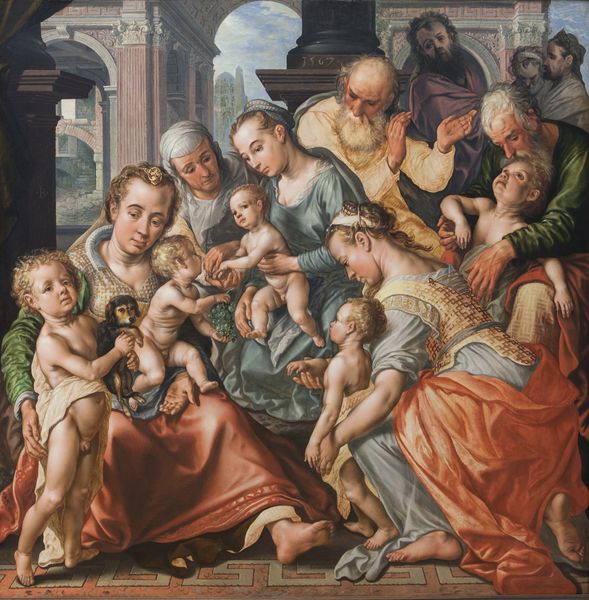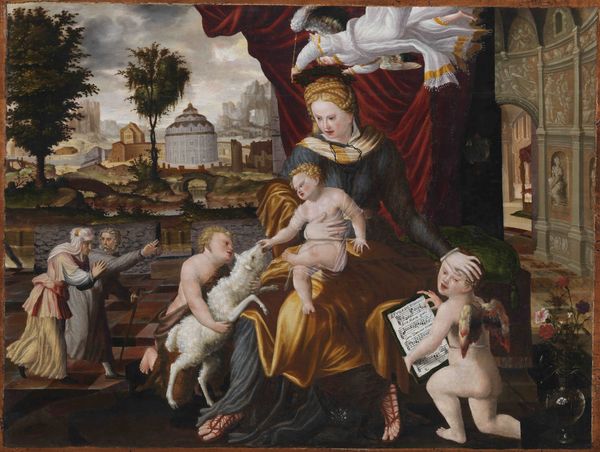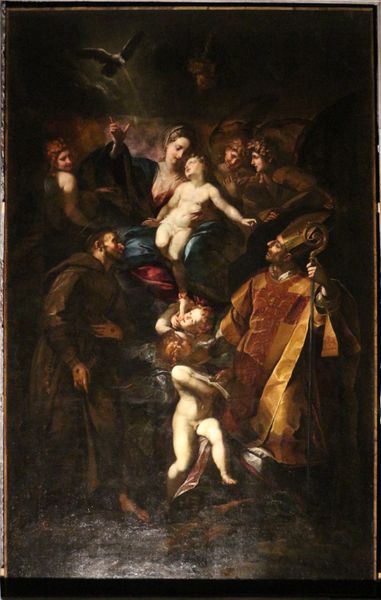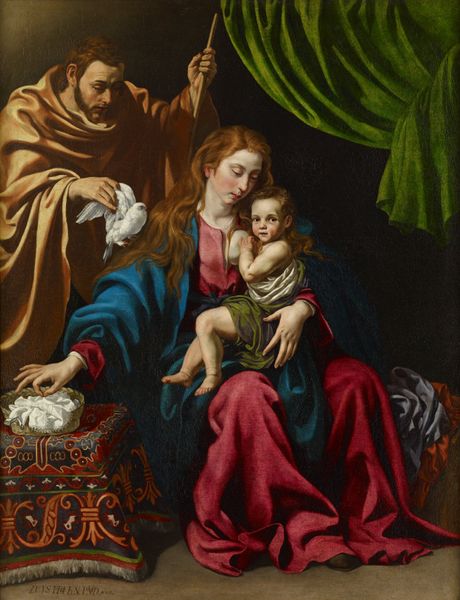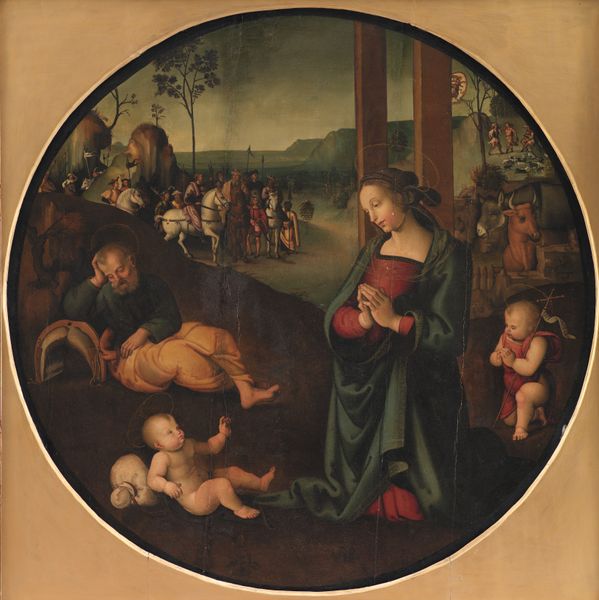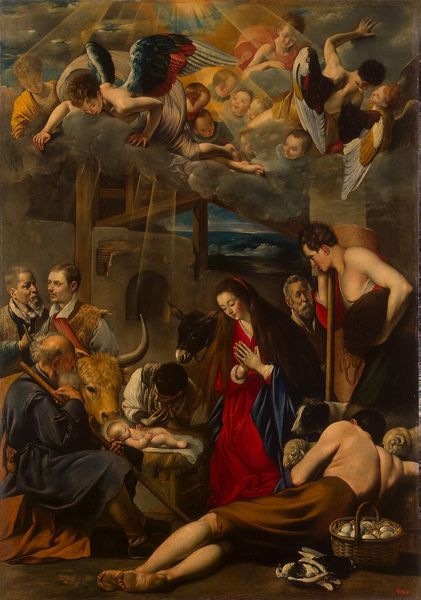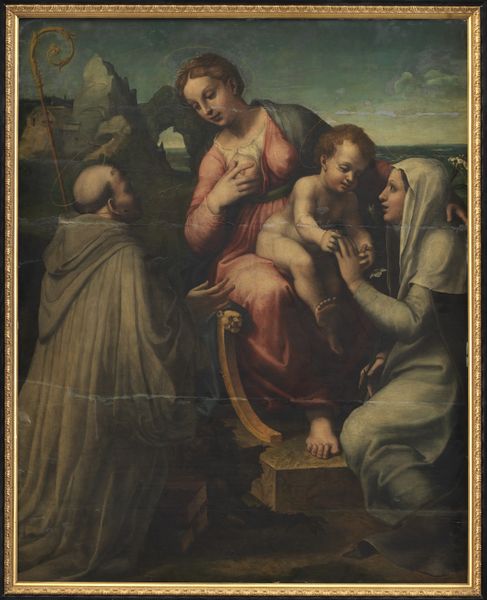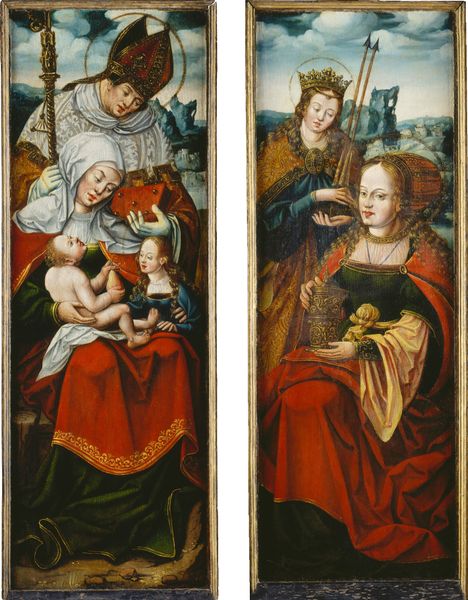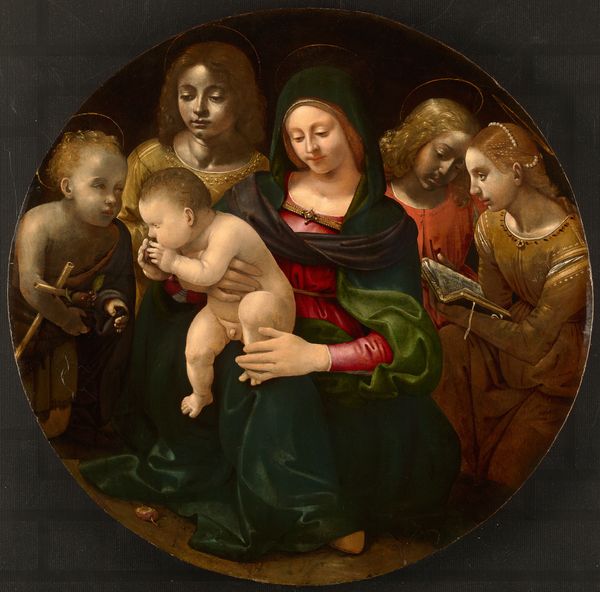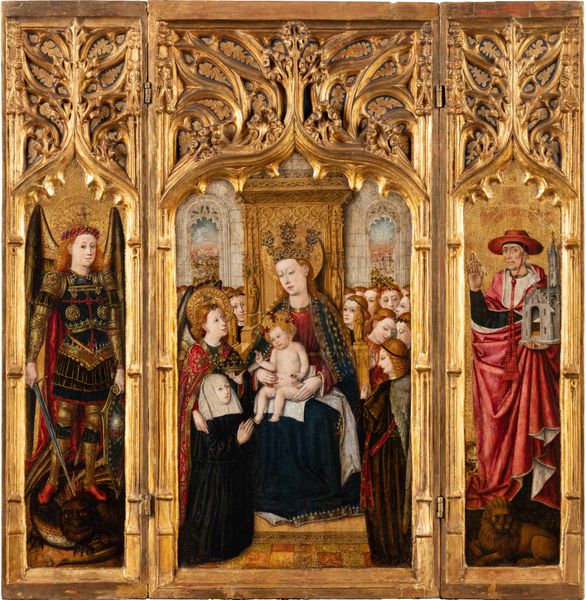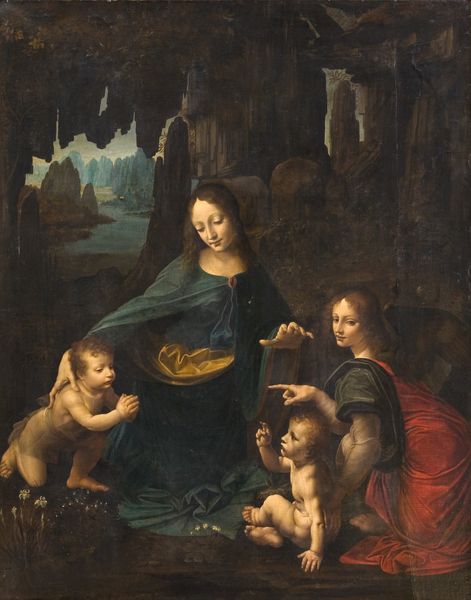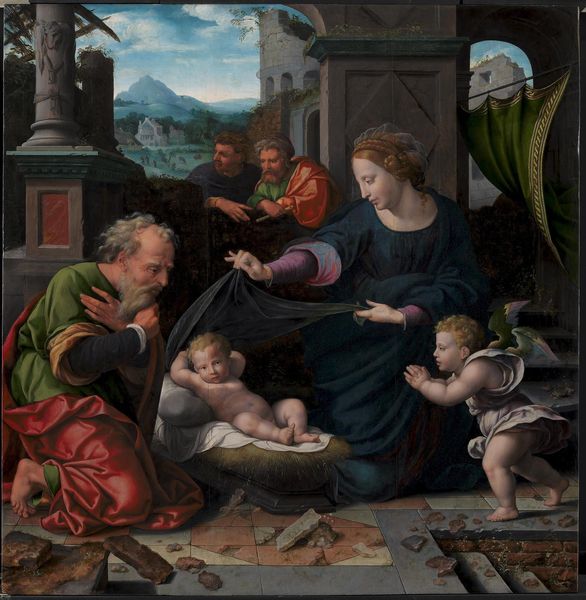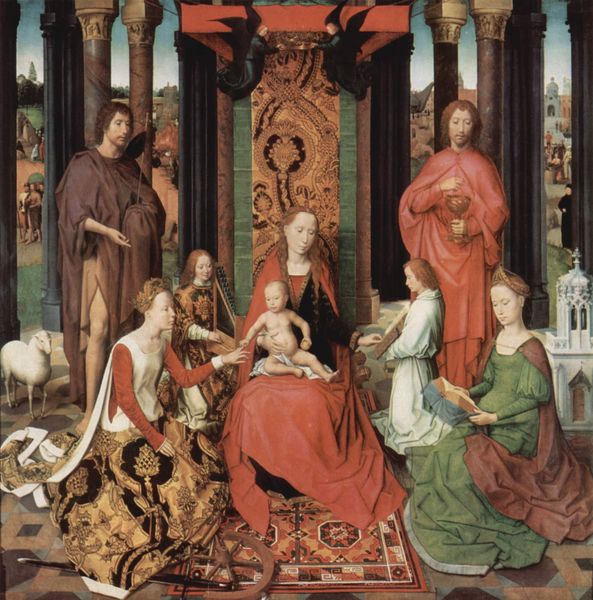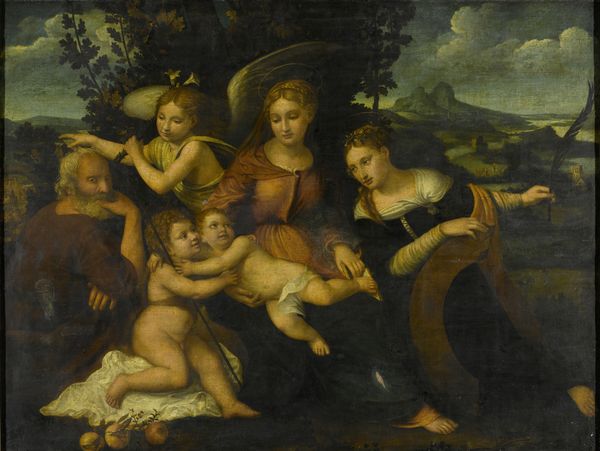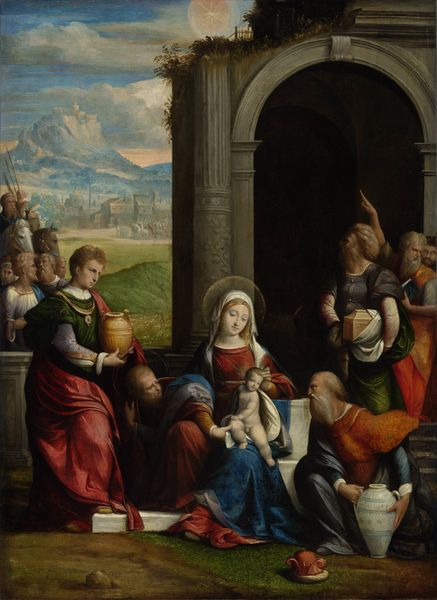
painting, oil-paint
#
portrait
#
painting
#
oil-paint
#
mannerism
#
figuration
#
oil painting
#
history-painting
Copyright: Public domain
Curator: What strikes me first about this painting is the almost overwhelming busyness of it all. There’s so much happening! Editor: You’ve hit on something there. Let’s give listeners some context. We're looking at "Birth of the Virgin" created in 1602 by Alessandro Allori using oil paint. It's quite a dynamic interpretation of a classic biblical scene. Curator: Dynamic is certainly one way to put it. The eye jumps from the flurry of activity around Saint Anne to those almost mischievous-looking cherubs hovering above. The overall feel is opulent, but almost agitated. I wonder if that reflects some anxieties of the era. Editor: It's important to consider the Mannerist style prevalent at the time. Allori was a Florentine artist, very much immersed in that movement, which deliberately moved away from Renaissance ideals of balance, prioritizing complexity and artifice. The exaggerated poses and the compressed space are typical features. But let's dig into what it says about social expectations. This image is a clear illustration of domestic life focused on the preparation for motherhood in that specific era. Curator: That Mannerist sensibility really shines through, especially with how each figure seems to be caught in their own world, and with such heightened gestures. Look at the angel showering rose petals on the newborn virgin as though he is an omen for a bright destiny. Then also notice Saint Anne’s golden plate as the offering is laid out before her – is it not an indication of her exalted place in Christian history? These elements speak volumes beyond the surface narrative. Editor: And those lavish fabrics, gilded vessels, and meticulously rendered details are telling. Allori came from an artistic lineage that intersected with prominent Florentine families, providing him insights into their rituals and the politics woven into domestic settings. These paintings reflected the world and aspirations of a very specific group of people. Curator: Right! I keep coming back to the way this painting is teeming with both overt symbolism, religious elements, and then deeper cultural meaning. It encourages reflection on the private experience of birth and the public construction of powerful matriarchal figures like Saint Anne. Editor: Absolutely. The work encapsulates so many layers - artistic technique, societal values, religious significance - giving viewers today a vivid glimpse into 17th-century Florentine culture. Curator: It gives us pause to contemplate both our continuities and ruptures with that past. Editor: Indeed! Thank you for that beautiful analysis, now our listeners can proceed to the next artwork.
Comments
No comments
Be the first to comment and join the conversation on the ultimate creative platform.
